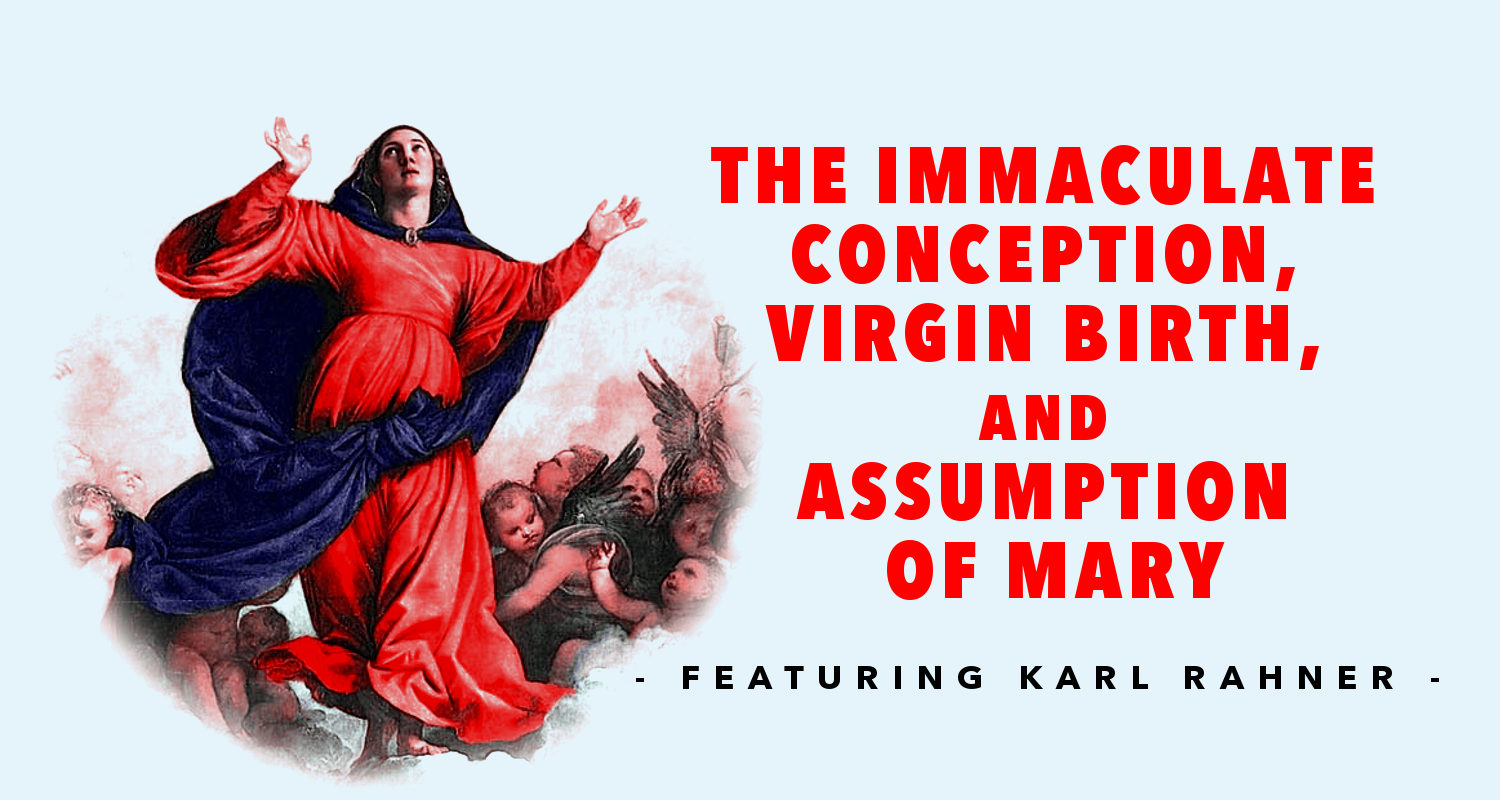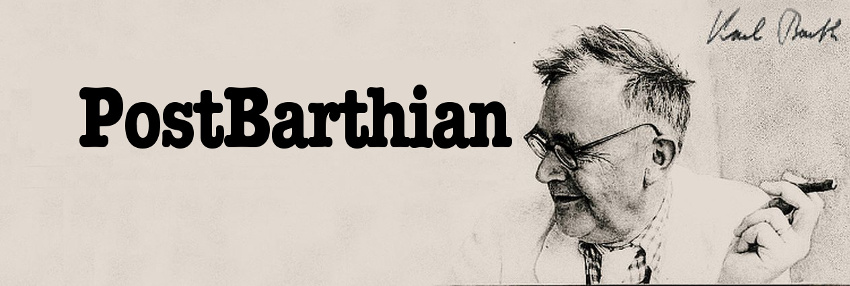 It may surprise many Evangelicals today to learn that Martin Luther, John Calvin and the other reformers affirmed similar (or even the same) Marian Dogmas as the Catholic Church. Protestant Mariology has been in significant decline since the Reformation, and most protestants reject almost every Marian Dogma except for a simplistic and unformed belief that Jesus was "born of the Virgin Mary" as the Apostles' Creed states. So it is a modern myth believed by evangelicals today that the Reformation was a dispute over Marian Dogmas. Ironically, Evangelicals consider this simple belief in the Virgin Birth to be indispensable to the Christian faith is largely due to the controversial influence of American Fundamentalism that explicitly listed "belief in the Virgin Birth" as one of the five fundamental core beliefs, and has become a litmus test for bible translations too. Protestant theologians (outside the purview of American Fundamentalism) in the last century have denied the Virgin Birth, including Wolfhart Pannenberg, Emil Brunner, Jürgen Moltmann, Rudolf Bultmann and many other. Karl Barth and other theologians still affirm the Virgin Birth but not as a strictly historically verifiable event, or affirm the Virgin Birth by reinterpreting it as a rejection of certain Christological heresies such as Adoptionism or Arianism, etc.
It may surprise many Evangelicals today to learn that Martin Luther, John Calvin and the other reformers affirmed similar (or even the same) Marian Dogmas as the Catholic Church. Protestant Mariology has been in significant decline since the Reformation, and most protestants reject almost every Marian Dogma except for a simplistic and unformed belief that Jesus was "born of the Virgin Mary" as the Apostles' Creed states. So it is a modern myth believed by evangelicals today that the Reformation was a dispute over Marian Dogmas. Ironically, Evangelicals consider this simple belief in the Virgin Birth to be indispensable to the Christian faith is largely due to the controversial influence of American Fundamentalism that explicitly listed "belief in the Virgin Birth" as one of the five fundamental core beliefs, and has become a litmus test for bible translations too. Protestant theologians (outside the purview of American Fundamentalism) in the last century have denied the Virgin Birth, including Wolfhart Pannenberg, Emil Brunner, Jürgen Moltmann, Rudolf Bultmann and many other. Karl Barth and other theologians still affirm the Virgin Birth but not as a strictly historically verifiable event, or affirm the Virgin Birth by reinterpreting it as a rejection of certain Christological heresies such as Adoptionism or Arianism, etc.
Roman Catholic theologians in the past century have acknowledged the theological problems with the infancy narratives, such as Raymond E. Brown's The Birth of the Messiah, without diminishing their Mariology. In fact, Marian Dogmas have significantly developed in the last two centuries: in 1854, Pope Pius IX included the Immaculate Conception of Mary as part of the church's infallible teachings in the Ineffabilis Deus, and in 1950, Pope Pius XII included the Assumption of Mary as part of the church's infallible dogma in the Munificentissimus Deus. These statements on the Immaculate Conception and Assumption of Mary are not 'new' dogmas, but formal pontifications clarifying ancient Marian Dogmas that the Catholic Church has believed since late antiquity. In this article, I will discuss two essays by Karl Rahner (one of my favorite Roman Catholic Jesuit theologians) on Mariology.
Karl Rahner's defense of Marian Dogmas
Karl Rahner, has two essays in his book Theological Investigations Vol. 1: God, Christ, Mary and Grace (1954) on "The Immaculate Conception" and "The Interpretation of the Dogma of the Assumption" that are excellent introductions to the two controversial Marian Dogmas of the Immaculate Conception of Mary and the Assumption of Mary into heaven respectively. The essays commemorate the centennial anniversary of the doctrinal definition of the Immaculate Conception in Munificentissimus Deus (1854) and the essays were also inspired by the definition of the "new dogma" of Assumption of Mary a few years beforehand in the Ineffabilis Deus (1950). Karl Rahner returns to these topics many times throughout the many volumes of his Theological Investigations (which is similar in size to Karl Barth's Church Dogmatics).
Karl Rahner on the Immaculate Conception
The Immaculate Conception of Mary is often confused with the Virgin Birth of Jesus. The Immaculate Conception is a dogmatic belief that Mary was "preserved and exempted from every stain of original sin" [1] according to Pope Pius XI in the Munificentissimus Deus, and does not refer directly to the incarnation during the Virgin Birth.
In his essay "The Immaculate Conception", Karl Rahner argues that belief in the Virgin Birth necessary entails other theological conclusions about Mary that are not explicitly detailed in the scriptures, but they have been believed since the earliest church fathers and theologians. Rahner explains that Jesus is truly and physically the son of Mary; so it is appropriate to call Mary the Mother of God because the incarnation was occurred within her. So Mary's physical body experienced the blessing and redemption in preparation for the incarnation, so therefore belief in the Virgin Birth does not refer to Jesus' body alone, but Mary's body as well.
Rahner continues to say that Mary is not a co-redeemer aside Jesus, but a direct recipient of the redemption of Jesus, and that she experienced the redemption of Jesus in a physical way in her body that other Christians will not experience until the eschatological resurrection of the body occurs. Mary's freedom from original sin is therefore a specific blessing she received by being predestined to be the mother of Jesus, and although she was born in the same way as all people under original sin, she was given a special grace necessarily in preparation of the Virgin Birth.
In nuc, Rahner's argument is that belief in the Virgin Birth of Jesus Christ, necessarily entails belief in the Immaculate Conception of Mary, and likewise the other Marian Dogmas (like the Assumption of Mary). Alternately, to limit the Virgin Birth to the Incarnation alone, is consistent with the Protestant pattern resulting in the denial of the Virgin Birth and the incarnation of Jesus entirely (as I explained at the beginning).
Karl Rahner writes in "The Immaculate Conception":
"It may indeed be said that a sense of Marian dogma is an indication of whether Christological dogma is being taken really seriously; or whether it is being regarded (consciously or unconsciously) merely as a rather outmoded, problematic, mythological expression of the fact that in Jesus (who is basically just a religious man) we undoubtedly feel God (here again a cipher for an unexpressed mystery) particularly close to us. No, this Jesus Christ, born of Mary in Bethlehem, is at once, as One and Indissoluble, true man and true Word, consubstantial with the Father. And so Mary is in truth the Mother of God. It is only to someone who truly and unreservedly confesses this that the Catholic Church can continue to speak meaningfully about her other Marian dogmas. And if anyone protests against further Marian dogmas, either explicitly or by passive indifference, he must expect to be asked whether he believes and confesses what the Church solemnly confessed at Ephesus in 431 as the faith of the one and undivided Church, and what the Reformed Church of the sixteenth century believed too, though it did not really raise the question whether this was necessary in order that one could as a sinner be consoled by faith in a gracious God." [p202-3, TIC]
Karl Rahner on the Assumption of Mary
Karl Rahner continues his argument in his next essay "The Interpretation of the Dogma of the Assumption" that defends the Assumption of Mary into Heaven, which is the belief that Mary the Mother of Jesus did not experience a physical death, but instead she was resurrected and assumed into heaven similar to the Ascension of Jesus, and in accordance with it. Rahner argues that the "new dogma" defined four years earlier, was not in fact new, but is present in the earliest church fathers. (The Reformers and the Qu'ran make similar statements that may be understood as defending the Assumption of Mary as well. I'll add that new truths are not less true. For instance, doctrine of Substitutionary Atonement (or Satisfaction Atonement) was not defined until Anselm of Canterbury in the 11th Century CE. )
In the essay, Rahner argues that the resurrection of Jesus was not an individualistic event, and appeals to Matthew 27:52ff as a prooftext that others were resurrected with Jesus, and that these mysterious resurrections are not mythological intrusions (that may otherwise be explained by an earthquake that opened tombs, etc.) but are truly other people who experienced the resurrection along with Jesus on the third day. (As Karl Barth also explained, there is one resurrection of Jesus in threefold form). Rahner also appeals to Genesis 2:8 that argues that says "it is not good for man to be alone" as specific prediction that Mary would be resurrected along with Jesus. Rahner also argues that the special grace that Mary experienced in the form of the Immaculate Conception, demonstrates that she experienced a specific bodily redemption, temporally before the Virgin Birth, but that also extended to an immediate resurrection of her body while she was still alive (unlike the others mentioned in Matthew 27:52ff that had died). So Mary is an objective and physical example of a person who has experienced the resurrection while they were still alive, as Paul predicted in 1 Corinthians 15:51 that "we will not all die, but we will all be changed."
Karl Rahner writes in "The Interpretation of the Dogma of the Assumption":
"So when we find in Matt 27:52ff that other bodies too, those of saints, rose up with him (indeed even 'appeared'—as he himself did—to show that the end of all the ages has already come upon us), this is merely positive evidence from Scripture for what we would have expected anyway, if definitive salvation has already been unshakably founded, death conquered, and a man, for whom it is never good to be alone, has entered upon the fulfillment of his whole being. Hence to try to set aside this testimony from Matthew as a 'mythological' intrusion, or to argue away its eschatological meaning with ingenious evasions—such as that it is merely a matter of temporary resurrection or even of 'phantom bodies'—would not be in accordance with the authoritative voice of Scripture. It is a fact that by far the greater part of the Fathers and the theologians, right up to the present day, have firmly maintained the eschatological interpretation of the text as the only one possible from the exegetical point of view. In this connection it is not without interest that most of the Fathers and theologians adduced as witnesses for Mary' Assumption in the Bull of the definition also gave explicit support to this eschatological interpretation of the text." [2]
Karl Rahner on Protestant Opposition to Marian Dogmas
At the end of his essay "The Interpretation of the Dogma of the Assumption", Karl Rahner provides a concluding criticism of Protestant rejection of Marian Dogmas including the Immaculate Conception and the Assumption of Mary. He argues that Protestants have a Theology of the Cross but not a Theology of Glory for here and now, and this means that Protestants only anticipate a future resurrection in the way that denies that the resurrection has already occurred, and in the worse cases, Protestants have abandoned not only hope for a future resurrection, but also belief that Jesus' resurrection on the third day and his incarnation during the Virgin Birth occurred either.
Karl Rahner writes in "The Interpretation of the Dogma of the Assumption", which is a conclusion to both essays:
Perhaps the deepest reason why Protestantism rejects the new dogma is because really it is only aware of a theology of the Cross as a formula for reality here and now, and not a theology of glory; for Protestantism this is ultimately only a promise, and not something which exists 'even now', although it has not embraced everything yet and for us here below has not yet become apparent. But for anyone who believes that counter to all appearances the forces of the world to come have seized hold of this world, and that these forces do not consist merely in a promise, remaining beyond every sort of creaturely existence, for a future still unreal; for such a one the 'new' dogma is really nothing more than a clarification , throwing light on a state of salvation already in existence, in which he has always believed. That this state of salvation should be attributed to Mary in its entirety and fullness will not seem an impossibility to someone who knows that this salvation was born of her in virtue of the consent of her faith and in consequence has had its most perfect effect in her. The 'new' dogma has significance not only for Mariology but also for ecclesiology and general eschatology. [3]
Karl Rahner's Concluding Virgin Birth Dilemma
Karl Rahner's defense of the Immaculate Conception of Mary and the Assumption of Mary into Heaven raises the uncomfortable conclusion that a simplistic belief in the Virgin Birth that denies other Marian Dogmas is not sustainable or rational and places oneself between charybdis and scylla; this dilemma's consequence is one must embrace a consistent eschatology that denies the Virgin Birth in part like Karl Barth or in whole like Rudolf Bultmann, Wolfhart Pannenberg, Emil Brunner, Jürgen Moltmann and many other Protestant theologians today; or else, embrace the full Mariology of the Catholic Church, including the Marian Dogmas of the Immaculate Confession and the Assumption of Mary like Karl Rahner and countless theologians and fathers since the beginning of the Christian Church.
Sources:
1. Karl Rahner, Theological Investigations Vol. 1: God, Christ, Mary and Grace, "The Immaculate Conception", trans. Cornelius Ernst, O.P., (Helicon Press, Baltimore: 1965), [Originally published in 1954, Schriften Zur Theologie, I], p. 201
2. Rahner, "The Interpretation of the Dogma of the Assumption", p. 220
3. Rahner, "The Interpretation of the Dogma of the Assumption", 226-7.
4. Image Header source wikipedia: Titian's Assumption (1516–1518).



December 6th, 2018 - 16:30
At issue for me is that the Virgin Birth and Marian teaching have no witnesses. They follow the ancient pattern of magnifying birth of heroes. Even we do that with legends. Of course, there is also the matter of both teachings moving against nature and history.
December 6th, 2018 - 16:32
Yes, I agree. That’s why I said you end up with a charybdis and scylla, and either follow Rahner or Pannenberg. Thanks for reading George!
May 7th, 2019 - 10:59
So I take it you’re following Pannenberg?
May 7th, 2019 - 11:55
I don’t know! I like them both. I’m such a contradiction. 🙂
December 8th, 2018 - 06:29
As I recall, the goal was to navigate between scylla and charybdis…
January 24th, 2019 - 10:51
An impossible task, as the saying goes…
December 9th, 2018 - 13:17
Reformed covenant theology can give you a sinless Jesus without a sinless Mary. In fact, in biblical theological terms, the guilt of original sin is imputed to Adam’s offspring through fathers, not mothers. Because Adam is the covenantal head (not Eve) therefore the human race is guilty of Adam’s transgression (not Eve’s) even though they both committed the same offense. An immaculate conception of Mary is only necessary if the propagation of the guilt and pollution of original sin is viewed in realist/substantialist (almost genetic) terms. Covenant theology, on the other hand, views it in terms of a covenantal union. Adam was not just an individual person, but also a public person. He is not just an individual before God, but he is also a corporate person. This explains the emphasis on Jesus is the seed of the woman, conceived by Mary without any male interaction. The lack of a male descendant of Adam as father, breaks the federal link with Adam, and thus Jesus is born guiltless and immaculate. The idea of Adam’s federal headship, and the similar headship of husbands and fathers, has been abused by some and rejected out of hand by others, but it is fairly easy to make the case in biblical theological terms of some kind of Adamic (and husbandly) headship. Thus a Reformed protestant can still have a fairly rich Mariology (as did Calvin) but avoid the circularity of saying that the Mediator, before he existed, “cleansed” Mary (St. Thomas’s view) or “cleansed” her conception (Pius IX’s view), so that He could then be conceived and born “clean.” If Jesus’s atonement can work backwards in time to cleanse Mary’s conception, then why not just skip Mary altogether and have Jesus cleanse His own conception? The virginal conception is Biblical and fits perfectly within the Bible’s own covenant theology. It doesn’t need speculative epicycles of preemptive cleansing.
December 16th, 2019 - 06:12
On Mary’s assumption: are there any relics of Mary (no matter whether they are fake or not) known? If none, we should ask ourselves why so. Common sense tells that if she died and nothing extraordinary happened with her body, christian believers should either take care of her grave or keep her relics with great piety. At least the lack of relics tells that at the time when christians became interested in these kind of things an opinion that something happened with her body after her death was commonly held.
March 19th, 2025 - 04:42
The easiest way to deal Fr Raymond Browns disputation of the Virgin Birth is to just admit his methodology is retarded and his reasoning flimsy.